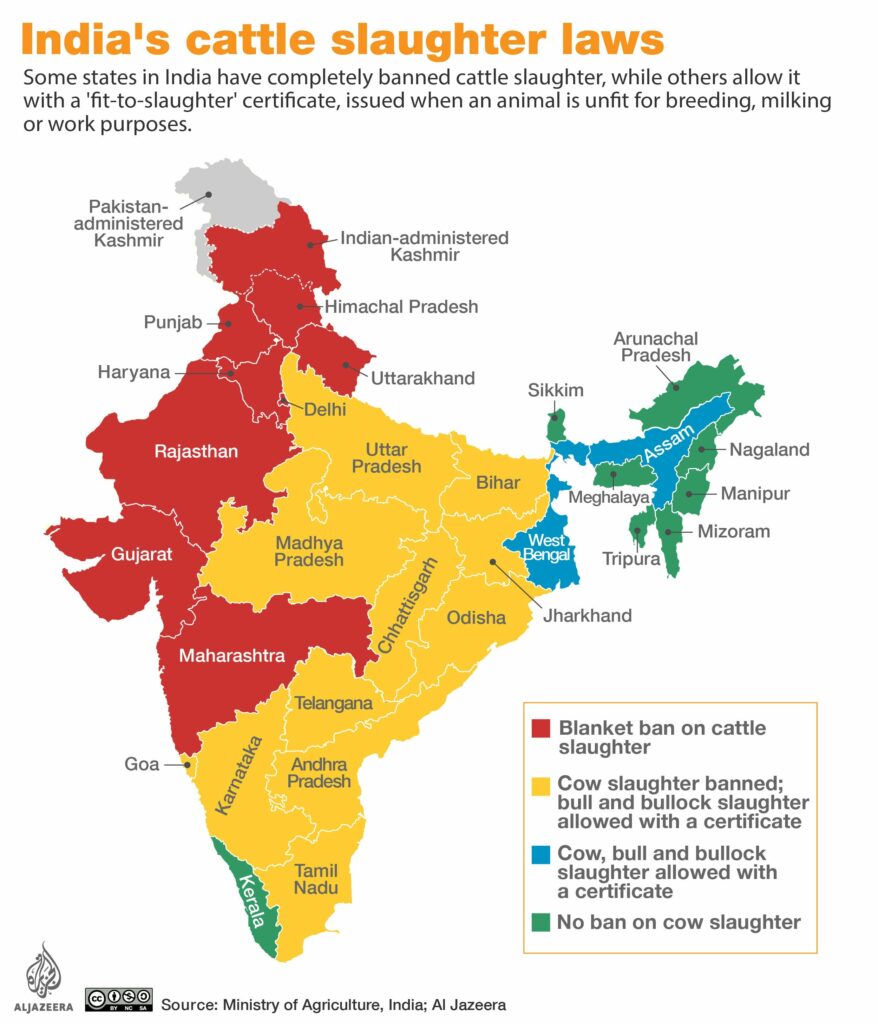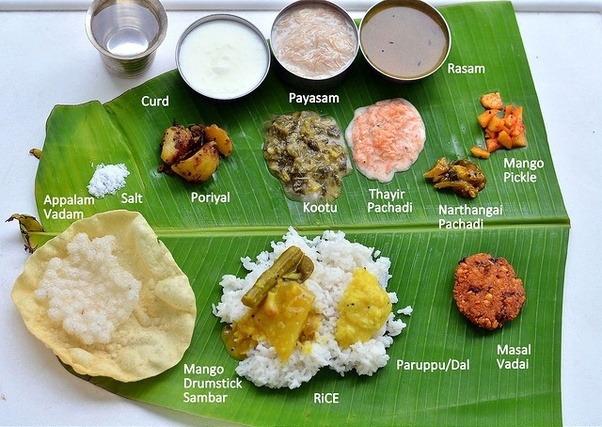Don’t feel like reading? Listen to me tell the story.
Introduction – “So for us the Madras Club is like Christmas everyday!”
Lesson 1: Customer service is an oxymoron – “The customer is the biggest enemy in your life.”
Lesson 2: India and X-efficiency – “You want to know the problem with Toyota?”
Lesson 3: Everyday is judgement day – “This is India. Forget the Madras Club. Everybody judges everybody. The minute he leaves the room I’m going to judge his arse…”
Lesson 4: There is no such thing as privacy – “They call me WHAT?”
Lesson 5: Residential property selection is counterintuitive – “Of course it was new so nothing worked.”
Lesson 6: There’s no food like ‘home food’
“What would happen if we didn’t take our own food?
There would have been a revolt!”
For foreigners, food in India is a revelation. For Indians, THEIR food is an addiction; it is as necessary as the air they breathe to sustain their lives.
Growing up in Australia we would occasionally go out to Indian restaurants. Back in the 90s and 00s it would appear the only Indians in Australia, and certainly Brisbane where I grew up, who opened restaurants were from the Punjab region. Their rogan joshes[1], kormas[2], butter chickens[3], and all of those lovely, rich ‘curries’ with naan breads[4] were delicious, spicy treats. If we were feeling really adventurous (and my parents were not) we might go for a vidaloo[5]. Your Mum might have some Madras curry powder[6] in the spice cupboard which was rolled out occasionally for an ‘exotic’ dish. That was Indian food, wasn’t it?
My first meal in India
On my very first day in India, I flew into Bangalore, landed up[7] at the groom’s hotel the day before all of the wedding festivities were to begin, and bumped into the groom in the foyer. Could I be downstairs in 10 minutes? Of course! I was quickly whisked off to the bride’s family home for a traditional South Indian lunch and mehndi ceremony[8]. I knew the groom from university, but had never met his bride or her family.
When lunch was ready, we were ushered outside to a long table with a large banana leaf and a small metal cup filled with water set out at each place setting on one side of the table. The first round of us filed in and sat down. The lovely Vijaya Auntie, who would soon become my Indian Mum, sat next to me and explained what was happening as I was clearly out of my depth in this territory. First we took a small amount of water on the fingers of our right hands and spread it out to clean the freshly plucked leaf.
Immediately a line of men came out, each carrying metal containers filled with the most amazing smelling things, and began dolloping their wares strategically on our banana leaves as they moved along the table single file.
I can’t remember if I took up the offer for cutlery or just went straight in with my hand, but I think I just went for it. No sooner had the men left with their containers than they were back again filing past with yet MORE different, delicious morsels.
If you have never had an Indian meal from a banana leaf this way, then add it to your bucket list right now. You will get rice, papads[9], rasam[10], sambar[11], all kinds of different coloured, flavoured, and textured vegetable and lentil creations based around potatoes, beans, cabbage and ochra, pickles, and of course, curd (plain yogurt). There will be crunchy things, smushy things, hot things, cold things, sweat things, sour things, spicy things… oh the spicy things! When I say spicy, I don’t mean chilli spicy, I mean exotic spice combinations you get nowhere else.
There’s no curry in India?
I had never tasted food like this before. There was not a rogan josh, korma, or naan in sight! What was this mystical food I was eating?
What my ignorant self didn’t know at that point, is India is possibly one of the most multicultural places in the world. There are reportedly over 19,000 ‘mother tongue’ languages, 121 languages spoken by more than 10,000 people, and 22 of those are official languages as per the Eighth Schedule of the Constitution of India[12]. If that is how many languages are spoken, imagine the different types of food they all eat? The Punjab region I was used to eating food from in Australia is in the far north, whereas Bangalore, where I was on that first day, is in the central south. The languages, culture, and climates are completely different, so naturally so is their food.
One term you will not hear often, if at all in India, is ‘curry’. I hear people refer to what the British might call wet curries as ‘gravies.’ On further investigation, curry was actually a British term for ‘a stew’ before they arrived in India, which they then transferred to Indian gravies. However, there is also a possible association with the Tamil word ‘kari’ which means “any secondary dish eaten with rice.”[13] As a rule of thumb, don’t go to India and ask for a curry. You will look like an ignorant idiot.
Do you eat non-veg?
The vast majority of India is vegetarian, but a substantial proportion still eat some form of animal flesh even if it is just fish. Vegetarian restaurants are just restaurants, it is ‘non-veg’ ones you have to search for if you are looking for a meat fix.
Depending on which region you are in, the meat you desire might be illegal. Particularly in the north-west, stay away from beef as it is illegal to kill cows or bulls. The locals are also passionate about it. You can used cows for milk, cream, cheese, butter, yogurt, and the beloved ghee, but not beef as they are considered sacred in Hindu culture.

But if you try and take beef away from South Indians, particularly Kerelites, watch out! Kerela beef is famous, and sticking to their beef eating heritage, along with shunning the northern Hindi language is seen as another way to stick it to the more extremist, anti-beef northerners.
Many who eat non-veg just eat seafood, which is abundant around the vast coastlines.
Also, just because they are vegetarians, it doesn’t mean they eat a lot of vegetables! Carbohydrates are definitely king on the plate. There will certainly be rice, but usually also accompanied by a naan, dosa, idly, roti, chapati, tepla or some other bread-like creation to mop up the relatively smaller amount of vege, dahl or other ‘kari’ accompaniment. And there is always curd.
Indian Chinese food is a thing
Just as we in the West, often westernize foreign foods (which I always found really dumb), India sometimes Indianises them. One day I was having a lunch meeting at a Thai restaurant and ordered one of my favourites, a green curry. I was SO looking forward to the familiar flavours of lemongrass, galangal, green chillis, coriander and so on, when I was suddenly smacked in the face by this overpowering taste of cardamom!
Thai food has many lovely spices, but cardamom isn’t one of them. It did make me smile though.
India shares just over 4,000 kilometres of a border with China and has somehow managed to create its own special Indian Chinese dishes you won’t find in China, such as Manchurian dishes, chicken lollipop, chilli chicken, and Manchow soup. It also includes famous Indian adaptations to classic Chinese dishes.[14]
One of my friend’s sons live in the United States and really misses his Indian Chinese food. He even thought about opening up a restaurant over there with this unique food. Can you imagine how confused non-Indians would be as to what they would get there? Particularly in this current political climate! They might be expecting a butter chicken chow mein, Peking duck samosas, Sichuan Pork dosa, or other bizarre fusion dishes, when really, it is its own unique cuisine.
But why can’t the Indians appropriate some of their own Chinese food when in Britain, they think they invented Indian food? Having lived in England for a couple of years, I can say I can’t blame the Brits for trying to claim at least some food with a little flavour… Vindaloo ‘curries’ were not hot enough so they had to invent tindaloo[15] (or sting-the-loo) to really burn the drunken Brit’s head off on the way home from a night out. Madras curry powder is an English blend of spices made for the English palate, not an Indian powder[16]. In my experience many Poms were very passionate about their favourite Indian dishes, and I suspect if they were ever to actually land up in India, they would be quite surprised not to find the adaptions they are used to in Old Blighty.
Ordering food out is quite the performance
You may have gathered now that everyone has very particular tastes and ways they like their food cooked. As a result, no one just orders straight off the menu. That would be ridiculous. They want it with less oil, more ghee, extra chutney, less chilli, extra crispy, and the list goes on from seemingly simple requests, to the more bizarre.
Some of the common variations for snacks off the menu at the Madras Club, which were often then named after the person who first ordered this variation include: a special type of vada which is smushed flat and thus is more crispy when deep fried and served than its usually plump counterpart; some special boiled nuts with ginger soaked in tonnes of ghee, hand cut potato fries (as opposed to the regular, pre-prepared ones on the menu) with pepper, not salt on them; and one of my favourites, salted potato crisps which you dip in both green chilli and tomato sauce.
There’s no food like ‘home food’
The best, and most loved food is made at home. And yes, ‘home food’ is a real term! You get to pick the best ingredients and your own special blend of spices which hit the spot that only Mum’s food can. Everyone is so particular about how they like their food, but Mum knows exactly how you like it. It is also thought to be much healthier as one can regulate what goes into the food.
Such is the love and need for fresh home food, there is a network of dabbawalas, or tiffin (multi-tiered metal lunch-box) delivery people, who pick up tiffin’s of home food from people’s homes, then deliver it to their family members at work all fresh, hot, and ready to eat.[17] They would rather pay for this delivery than take the pungent portions with them in the morning and deal with heating or preparing it later at work, or buying food somewhere near the office.
Some offices provide food for staff, but still see staff bringing food from home. Some restaurants even advertise their food as ‘home food’ because of the deep connection people have with their Mum’s food, and imply they use more traditional ‘home’ like methods. Even those people who employ cooks will spend time training them to cook exactly the way they like things in their ‘home.’
The best meals I have had in India were when I was invited to people’s homes. I can’t tell you what I was eating because there was always so many amazing things in front of me to try.
One of my most memorable meals was when I visited an aged care home in Chennai during the nine-day Navarathri Ceremony[18]. There were lots of guests as well as the ‘inmates’ (their term, not mine!), and their regular chef just blew me away with the variety, flavours, and textures of food on my banana leaf. This was not a high-end facility. ‘Inmates’ shared non-airconditioned rooms and while some paid, many were sponsored by charities. Was this just because of the ceremony, or did they eat like this every day?
They did eat like that every day and were grateful for it. Some of them would visit their families sometimes, but be eager to return because the food was so great, and the comradery there was a joy. My friend who took me told the administrators how impressed I was with the food. They said it was incredible what the chef did with the money he got, and their only explanation for how he could do it was because of the love he put into it. When they then introduced me to the skinny, dhoti[19] wearing chef with the shy smile, I had no doubt it was true. I also felt even if he was offered more money to take his considerable talents elsewhere, he would not because of the pleasure he got from feeding this extraordinary group of people.
It is impossible to diet in India
Don’t expect to go on a diet when you visit India. There is no such thing as portion control when you eat with anyone other than by yourself. When eating from a banana leaf, if you are trying to limit your intake, you must watch the servers like a hawk and be ready to protect any empty spaces on your leaf. If you lose concentration for a split second you will find second, third, or even forth portions of those delicious delights appearing until you fold your leaf over, or stand up to leave the table.
When you eat at someone’s house, no matter what they serve, it seems it is rude if your host does not all but force you to eat until you are about to explode. In India your guests must never leave hungry, but many take it to mean you must leave with your stomach lining held together only at the atomic level it is so stretched. Inevitably the polite foreign guest will gain weight, but it will be awesome!
Food as gifts
There is also no more beloved gift in India than food. In mango season, people will send mangos as gifts. When they go to a special region and get a special pickle, they will bring home tonnes of it and send it also to their friends and family. There may be a special sweet made or bought from somewhere exotic, that will also be sent around. If you go to a temple and they make something special, you will bring it back for your friends as well. And they will eat these gifts lovingly, talk about them, remember them, and ask for more next time.
Food is one of the most important parts of any ceremony, whether religious or otherwise. The special flavours of food for different occasions, in different seasons, and from different regions, all conjure up memories. The pleasure and excitement people get when they receive these gifts, I think is not just from the lovely flavours, but the memories those flavours evoke, and that is why food is such a beloved gift in India.
Traveling away from home
When travelling away from home there is only a finite amount of time an Indian can be away from Indian food. It varies on the individual. Some can manage a week or maybe a month, for others a day is too long.
I travelled to Washington from India with an Indian colleague for a conference for one week. After a couple of days there he found a good Indian restaurant; we went back three times… It was only a week he would be away from his ‘home food,’ but he needed his fix. Not even the lure of the multitude of other cuisines available in the US Capital City he would not be able to access back home in Delhi could keep him away. He needed that comfort like a drug he couldn’t go without.
But that is nothing! I had friends who would take clients overseas, and one of their biggest considerations was making sure there was enough Indian food available. When going to exotic locations where they couldn’t guarantee its availability, they would pack boxes and boxes of Indian snacks, including cooked items. I asked one such friend about this.
“What would happen if we didn’t take our own food? There would have been a revolt!” he said.
Some companies will even send their own chefs and food ahead of conferences overseas as they know their Indian staff / customers / collaborators at best won’t concentrate, at worst would fly home early if they can’t get their fix.
I have also heard lovely stories from my friends travelling overseas when they were younger and Indian food of different varieties wasn’t as readily available as it is now, being invited home by strangers who knew exactly what they needed, and just how much they needed it!
What is the real lesson here? There are SO many varieties of Indian food from different regions (I haven’t even mentioned thalis[20] yet!) and they are all unique and bursting with incredible different flavours and textures. But the key ingredient, which I finally realised at that aged care home you truly can taste, that cements Indian’s relationship with their food, is the love that goes into making it, and the warm cloak of comfort and memories that flow along with it.
Want more Lessons from the Madras Club?
The next topics I planned to cover in the Lessons from the Madras Club might be a little too hot for the internet so I am switching to new content.
But if you want more, there is plenty I have left to say!
If 100 people to sign up, I will send you exclusive NEW Lessons including on:
- Politics and leadership
- Sex and fidelity
- The trials of extreme wealth
I want more Lessons from the Madras Club!
[1] Rogan josh is made with red meat, traditionally lamb or goat. It is coloured and flavoured primarily by alkanet flower or root and Kashmiri chilies. https://en.wikipedia.org/wiki/Rogan_josh accessed 26 September 2020.
[2] Kormas consist of meat or vegetables braised with yogurt (dahi) or cream, water or stock, and spices to produce a thick sauce or glaze. https://en.wikipedia.org/wiki/Korma accessed 26 September 2020.
[3] Butter chicken is chicken marinated for several hours in a mixture of lemon juice, dahi (yogurt), Kashmiri red chili, salt, garam masala and ginger garlic paste, cooked in a tandoor (traditional clay oventhen served in a mild tomato- and onion-based sauce that is simmered until smooth and much of the water has evaporated. https://en.wikipedia.org/wiki/Butter_chicken accessed 26 September 2020.
[4] Naan is a leavened, oven-baked flatbread. https://en.wikipedia.org/wiki/Naan accessed 26 September 2020.
[5] Vindaloo is based on the Portuguese dish carne de vinha d’alhos which is popular in Goa, Vasai, the Konkan, Kerala and other parts of India now known globally in its British Indian form as a fiery, spicy dish made with pork, beef, mutton, chicken, or tofu. https://en.wikipedia.org/wiki/Vindaloo accessed 26 September 2020.
[6] Madrad curry powder was invented for the British during the 19th century, and originally hailing from the city of Madras (now Chennai) – the capital of the Tamil Nadu region of South India – Madras curry powder is a subtle blend of aromatic spices, with a mild chilli kick. https://www.yumsome.com/how-to-make-madras-curry-powder/ accessed 26 September 2020.
[7] Indlish Translation – Land up – to arrive somewhere; possibly but not necessarily unexpectedly. E.g. “What time will you land up this evening?” “She just landed up without any warning.”
[8] Mehndi is a form of body art and temporary skin decoration originating in ancient India, in which decorative designs are created on a person’s body, using a paste, created from the powdered dry leaves of the henna plant (Lawsonia inermis). https://en.wikipedia.org/wiki/Mehndi accessed 26 September 2020.
[9] A papadum (also called papad) is a thin, crisp, round flatbread from India. It is typically based on a seasoned dough usually made from peeled black gram flour (urad flour), either fried or cooked with dry heat (usually flipping it over an open flame). https://en.wikipedia.org/wiki/Papadum accessed 26 September 2020.
[10] Rasam is a spicy-sweet-sour stock traditionally prepared using kokum, tamarind, or dried green mango juice as a base along with jaggery, chili pepper, black pepper, cumin, tomato, and other spices as seasonings. https://en.wikipedia.org/wiki/Rasam_(dish) accessed 26 September 2020.
[11] Sambar is a lentil-based vegetable stew, cooked with pigeon pea and tamarind broth. https://en.wikipedia.org/wiki/Sambar_(dish) accessed 26 September 2020.
[12] https://gulfnews.com/world/asia/india/census-more-than-19500-languages-spoken-in-india-as-mother-tongues-1.2244791 accessed 25 September 2020.
[13] https://www.newworldencyclopedia.org/entry/Curry accessed 25 September 2020.
[14] https://en.wikipedia.org/wiki/Indian_Chinese_cuisine accessed 25 September 2020.
[15] Tindaloo is actually an extremely spicy Bangladeshi gravy that does not resemble the English version which is usually just whatever variation of vindaloo they have but ramping up the chilli powder…
[16] https://www.spiceography.com/madras-curry-powder-vs-curry-powder/ accessed 26 September 2020.
[17] https://www.independent.co.uk/life-style/food-and-drink/dabbawalas-food-delivery-system-mumbai-india-lunchbox-work-lunch-tiffin-dabbas-a7859701.html accessed 25 September 2020.
[18] Navaranthri is a Hindu festival that spans nine nights (and ten days) and is celebrated every year in the autumn. https://en.wikipedia.org/wiki/Navaratri accessed 26 September 2020.
[19] Dhoti is a type of sarong that outwardly resembles trousers. https://en.wikipedia.org/wiki/Dhoti accessed 26 September 2020.
[20] A thali is meal made up of a selection of various dishes which are served on usually a round metal platter. https://en.wikipedia.org/wiki/Thali accessed 26 September 2020.
To be continued…
Thanks for reading and/or listening. I hope you enjoyed it. If you did, please like, comment and share on social media. I’m on Facebook, Twitter and Linkedin and my handle is @ClaireRWriter.
If you want to work with me, check out my website ClaireRWriter.com and book a meeting.
Until next time!




Pingback: Are you missing Lessons from the Madras Club? – Claire Richardson Writer